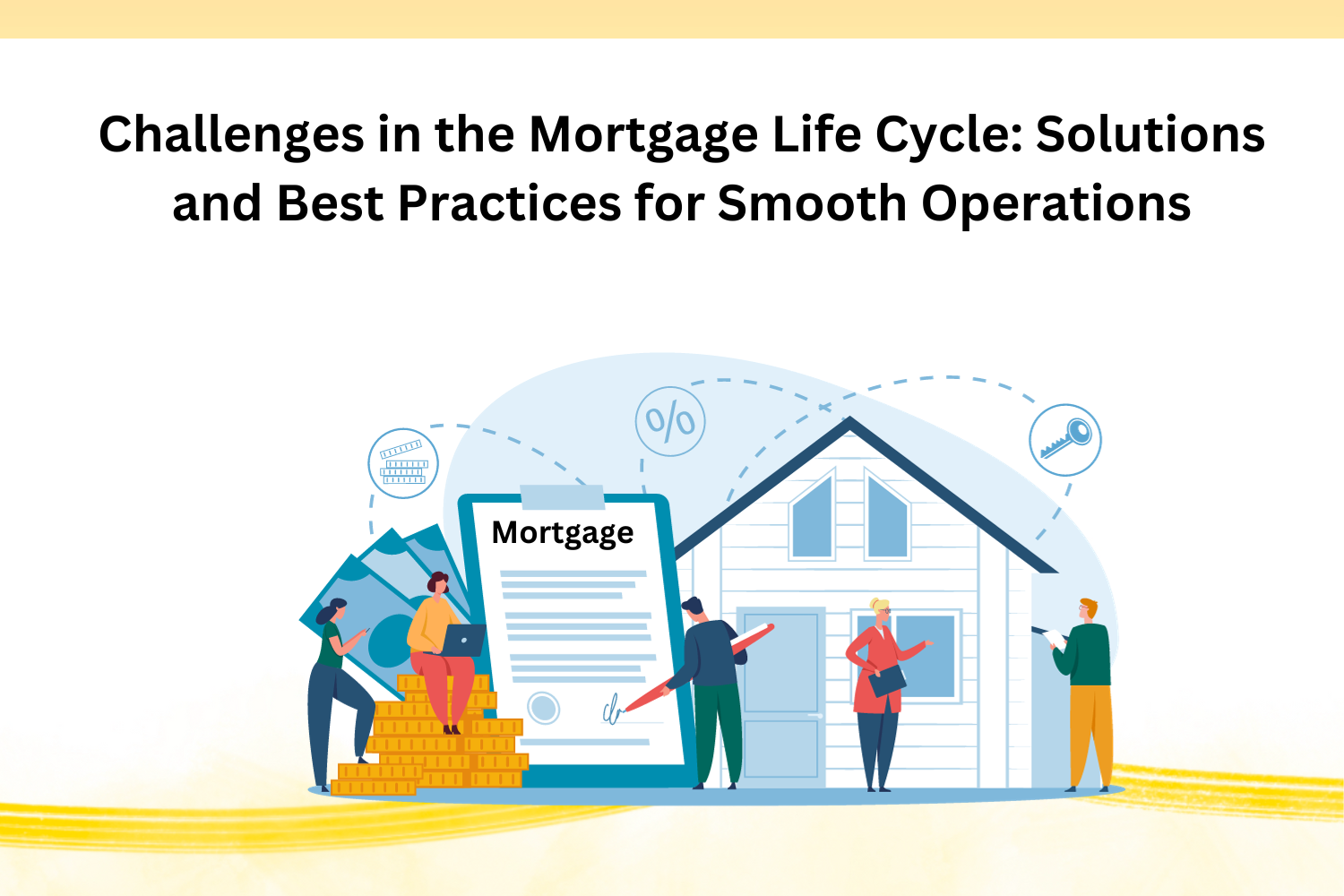Professionals in the financial industry face many challenges while understanding the complexities of the mortgage life cycle. Every stage, from origination to closing, necessitates accuracy, conformity, and flexibility to adjust to changing market conditions. We will examine frequent problems encountered throughout the Mortgage Life Cycle in this blog, along with workable fixes and industry best practices to guarantee seamless operations. Understanding and resolving these issues is essential for success in the mortgage operations, regardless of experience level or CeMAP Certification.
Table Of Contents
- Understanding the Mortgage Life Cycle
- Challenges in the Mortgage Life Cycle
- Solutions and Best Practices
- The Role of CeMAP Certification in Addressing Challenges
- Conclusion
Understanding the Mortgage Life Cycle
The entire process, from the first application to the last repayment, is included in the mortgage life cycle. Origination, processing, underwriting, closing, and service are important stages. Complex procedures, compliance audits, and stakeholder coordination are all part of each step. Let’s examine the difficulties that arise at various points in the mortgage life cycle and how to resolve them.
Challenges in the Mortgage Life Cycle
Origination Challenges
- Documentation Complexity: It might take a lot of time and effort to collect and verify the copious amounts of documentation that candidates provide.
- Regulatory Compliance: It can be difficult to navigate the regulatory environment while maintaining accurate and current compliance.
Processing and Underwriting Challenges
- Workflow bottlenecks: Ineffective workflows for processing applications can cause delays and annoyance for professionals and applicants.
- Risk Assessment: It might be difficult to accurately evaluate risk and make well-informed underwriting decisions; this calls for striking a balance between efficiency and thoroughness.
Closing Challenges
- Coordination Problems: It can be difficult to coordinate schedules and information between the buyer, seller, real estate agents, and attorneys, among other parties.
- Last-minute obstacles: Unexpected problems or changes in the situation could occur; to prevent delays, a prompt resolution is necessary.
Servicing Challenges
- Payment Processing: Robust systems are needed to prevent errors while managing timely and correct payment processing for borrowers.
- Customer communication: Without efficient procedures, it might be difficult to maintain effective communication with borrowers throughout the loan.
Solutions and Best Practices
Leverage Technology
- Origination: Use digital platforms to streamline paperwork and improve accuracy by collecting and verifying documents.
- Processing and Underwriting: To ensure effective processing and minimise bottlenecks, automate workflows with automation technologies.
- Closing: Use electronic closing solutions to make transactions run more smoothly and reduce the possibility of last-minute problems.
Invest in Training and Education
- Origination: Give your staff in-depth instruction on the most recent laws and compliance guidelines to guarantee that they fully comprehend the paperwork needs.
- Processing and Underwriting: Your team will be more proficient and able to make better decisions if they receive ongoing training on risk assessment and underwriting criteria.
Enhance Communication and Collaboration
- Closing: Use project management software and communication tools to make it easier for everyone involved in the closure process to coordinate.
- Servicing: Create open lines of communication with borrowers by giving them regular updates and quickly responding to their questions.
Utilize Predictive Analytics
- Origination: To lower the risk of defaults, use predictive analytics to evaluate borrower creditworthiness more precisely.
- Processing and Underwriting: Use predictive analytics to spot any process bottlenecks and make effective use of available resources.
Implement Quality Control Measures
- Closing: Implement rigorous quality control procedures to identify possible problems ahead of time and avoid last-minute shocks.
- Servicing: Audit payment processing protocols regularly to find and quickly fix any mistakes.
Maintain a Robust Compliance Framework
- Origination: To lower the risk of non-compliance, regularly update compliance protocols to correspond with changing requirements.
- Processing and Underwriting: To guarantee compliance with underwriting rules and pinpoint opportunities for enhancement, conduct routine audits.
Prioritize Customer Experience
- Closing: Establish clear expectations for the closing process and give priority to openness and clarity in your communications with customers.
- Servicing: Provide easy-to-use interfaces so that borrowers may quickly obtain information, resulting in an improved customer experience.
The Role of CeMAP Certification in Addressing Challenges
Professionals with a CeMAP Certification find that their extensive knowledge of mortgage practice and guidance is very helpful in overcoming obstacles that arise along the mortgage life cycle. Those who hold the CeMAP Certification are well-versed in mortgage-related laws, principles, and moral issues. Making use of this knowledge helps to improve decision-making, communication, and problem-solving abilities when faced with obstacles.
Conclusion
The mortgage life cycle is an intricate process that is fraught with difficulties at every phase. Whether or whether they hold a CeMAP Certification, financial industry professionals can increase productivity, enhance client satisfaction, and streamline operations by implementing cutting-edge technologies and best practices. Professionals looking for long-term success in mortgage operations must keep up with new developments in technology and industry best practices as the mortgage sector continues to change.

